Curtains are the first thing that catches the eye when a person enters a room. Therefore, they need to be harmoniously integrated into the interior. For this, you can use a variety of fittings. This article talks about what curtain tape is and how to use it correctly.
What is curtain tape for?
You can find a large number of fittings on sale that will help you quickly and easily hang curtains on the window, as well as give them amazing and beautiful gathers. One of these elements will be curtain tape. It looks like fabric scraps of different widths, along the entire length of which a cord or thin ropes are stretched. In the center of the tape there is a thicker layer with loops necessary for hanging curtains on a baguette, and the cords are used to create folds of the required type and size.
What is curtain tape used for:
- processing the upper edges of curtains or drapes;
- hanging them from the curtain rod without using rings or clothespins;
- creation of assemblies of varying complexity.
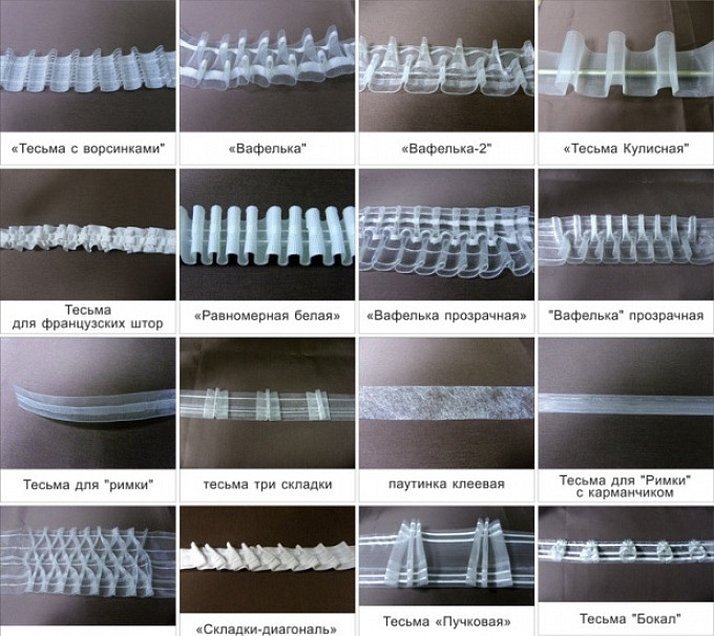
Also, the tape can be sewn in other places on the tulle. After tightening the ropes, folds are obtained on the surface of the tulle, they can be made in any form. In order to remove the curtains, you just need to untie the ropes and straighten the tape. Such a tape greatly facilitates the work of styling the window, and anyone can sew it. It is also called a curtain elastic, net or belt.
Attention! Using drapery, you can create beautiful patterns and lines on the surface of curtains or tulle.
But, unfortunately, it will be difficult for a beginner to perform some types of drapery. For this, it is recommended to watch several video tutorials to understand the essence of the work.
Types of tape for curtains
Curtain tape can be from 1.5 to 10 cm wide. Thin tape is used for hanging small curtains made of light materials. A wide tape is needed to fix thick curtains. It can be used to drape the edges of the product.
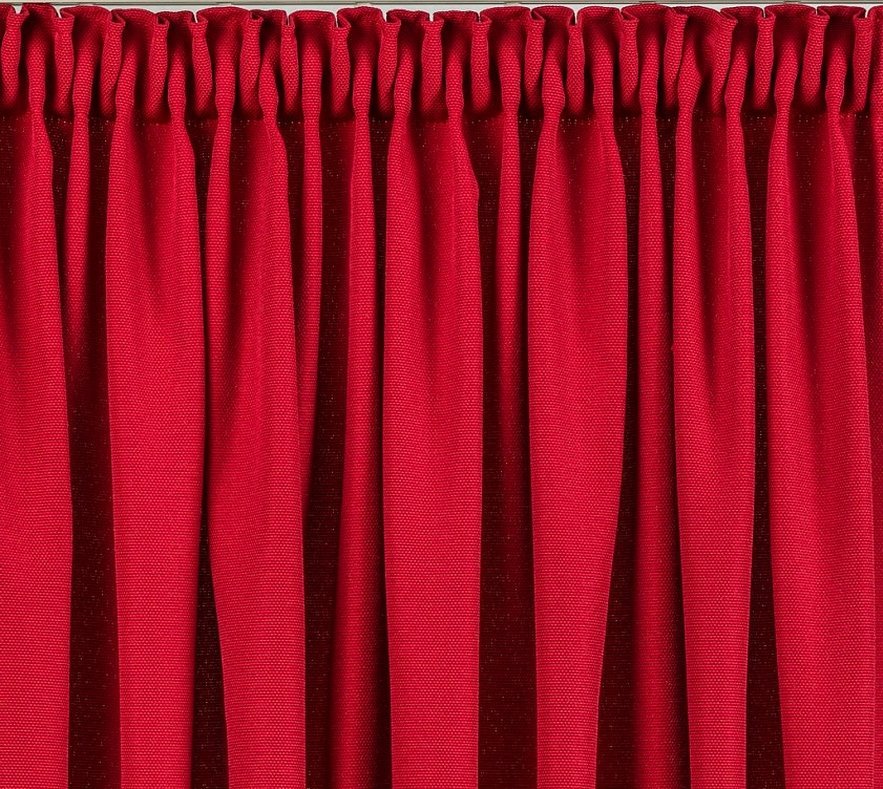
Types of curtain tape:
- transparent - mainly used for thin curtains;
- white - used in all other options, especially for dense materials such as velvet, wool silk, jacquard.
You can also find tape for making various draperies on curtains:
- creating light waves;
- creating folds in the form of a bow;
- creating folds in the shape of a cylinder.
According to the method of fastening, the tape can be:
- Sew-on - attached using a sewing machine or by hand;
- Adhesive - is attached to the canvas using hot steam treatment. This type of tape is necessary for transparent short curtains that have a small weight.
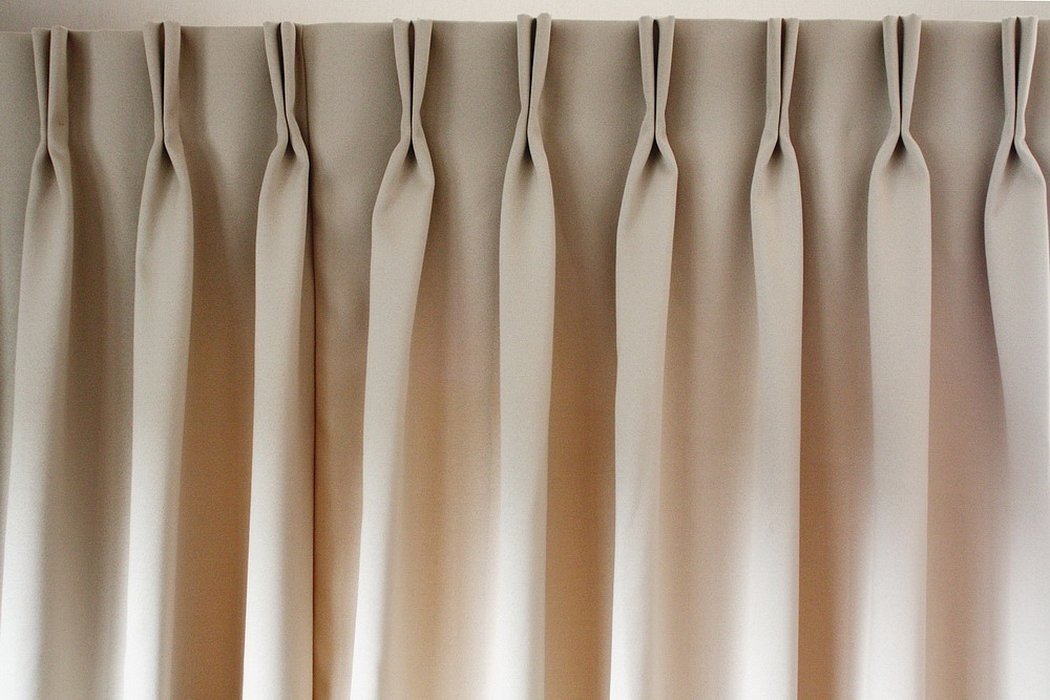
According to the assembly configuration, the tape can be:
- To form folds along a horizontal line. This type of tape is used for hanging traditional curtains, drapes, lambrequins;
- To form folds along a vertical line. This tape is used in lifting window openings (French, English).
The tape can be equipped with several rows of loops. Loops in two rows help to hang curtains on hooks and make light folds. If there are more (3-4) next to each other, then the loops are used to gather curtains and create a decorative upper edge on the product.
How to make a choice and calculate the length
In order for the tape to perform all functions correctly, it is selected in accordance with the fabric. For example, the types of tape for products of different materials are as follows:

- light fabrics, voile, organza or thicker fabrics, are held quite well on narrow curtain tapes with two ropes, on the first loops are created to hang the products, on the second folds are formed;
- Large and thick curtains are, of course, hung on wide strips with 3-4 ropes. In this way, you can create unusual folds.
To obtain a puff, a special tape is selected. In textile stores, you can find a tape suitable for a certain type of fabric. Therefore, before buying, it is advisable to consult the seller.
Calculation of the tape
The length of the curtain tape-mesh depends on the gathering index - this is a kind of "splendor" coefficient of the required folds. For example, to calculate the length of the product on a tape with classic folds, you need to double the footage of the material. For formal and luxurious gatherings, the fabric must be increased three times and add 10 cm for the lapel.
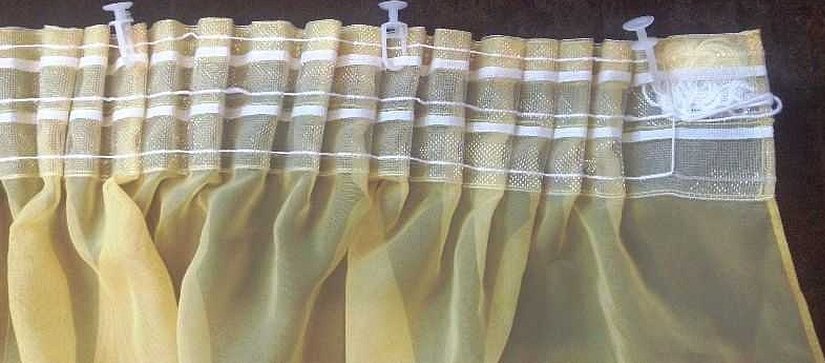
To calculate the width of curtains on the tape, the dimensions of the cornice are used to determine the parameters. It is important that the tape fixed to the curtain covers the cornice completely or extends slightly beyond the edge. To do this, you need to know the structure of the fabric - tape for thick curtains from 5 to 10 cm and the required height above the cornice - +5-10 cm.
How to sew curtain tape to curtains: step-by-step instructions
In order to sew the tape and hang the curtains correctly, you need to know the methods of attaching them to the cornice. The wrong choice of hanging method can ruin the designer's idea and not fit into the overall style of the room. Sometimes the structures collapse if the fixation is done incorrectly.
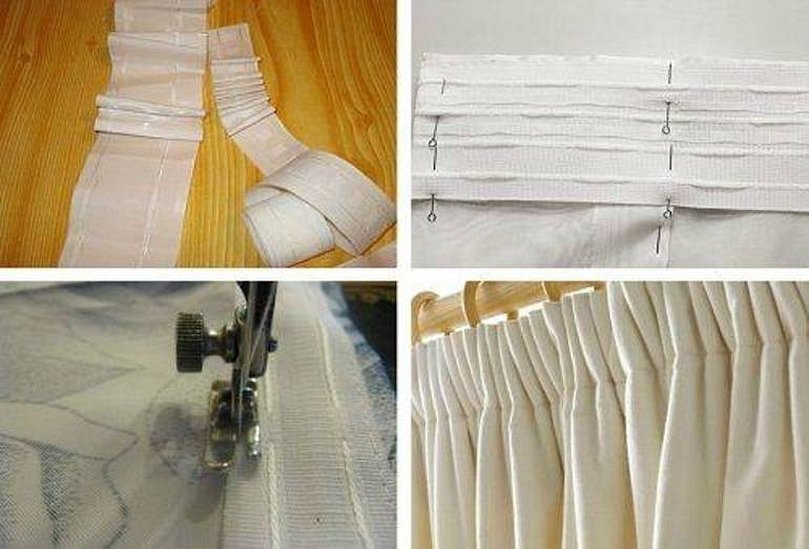
In construction stores, you can see different types of cornices. However, the most common cornices are made of metal, wood, as well as ceiling and string types.
The methods for attaching curtains to cornices are as follows:
- using rings. The cheapest and most popular method of fastening. Rings are usually already included in the kit when purchasing a curtain rod;
- drawstrings or pockets located on the top line of the curtain. Used for fastenings with a circular slit;
- clothespins. Used for lightweight fabrics;
- clips. They look like clothespins, but they don't have teeth. They are made for curtains from weightless material. Some types are equipped with locks and can have designer finishing;
- loops made of the same fabric as the curtain itself.

Formation of folds
To make a fold easily, the curtain tape should have at least three or four strings. They must be tied at each end of the tape at the same time. It is advisable to do this work with an assistant. When making folds yourself at home, the second end must be wound around the door handle.
The first thing you need to do is stretch the elastic. Grab the connected ropes of the free knot in one hand, and gather the ribbon from the edges to the center with the free hand, moving the fabric along the rope.
The curtain gathers into folds, and the laces are released and become longer. They need to be wound on cardboard.
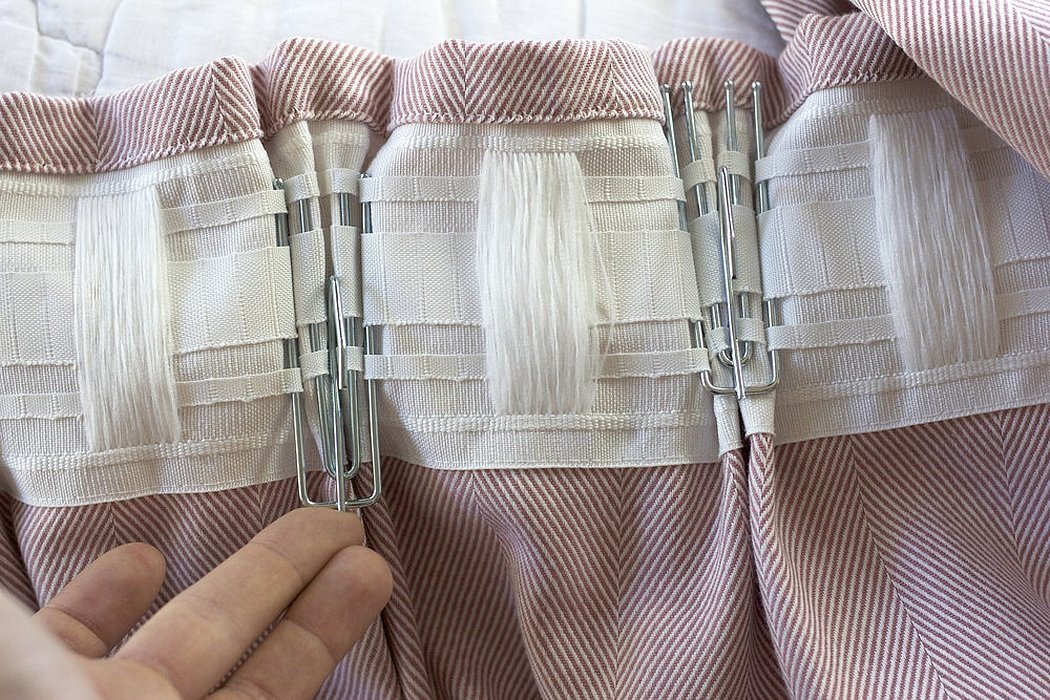
When the folds begin to interfere with the work process, they need to be moved to the fixed end of the cord. The gathered curtain tape is measured with a centimeter, adjusting it to the desired width. The final stage is the distribution of folds and fixation of the cord (do not cut) from the edges of the tape.
The hooks are attached to the tape every 8-10 centimeters and now you can hang the curtain on the cornice.
Working with tulle
This fabric is quite capricious, so it is advisable for beginners not to start their first work with it.
The next question is how to sew the curtain tape to the tulle. The curtain tape for weightless tulle is made of thick fishing line, this is necessary so that the "thick" fabric tape does not show through the transparent material. The tape thickness should be minimal so that it does not stand out in the room.
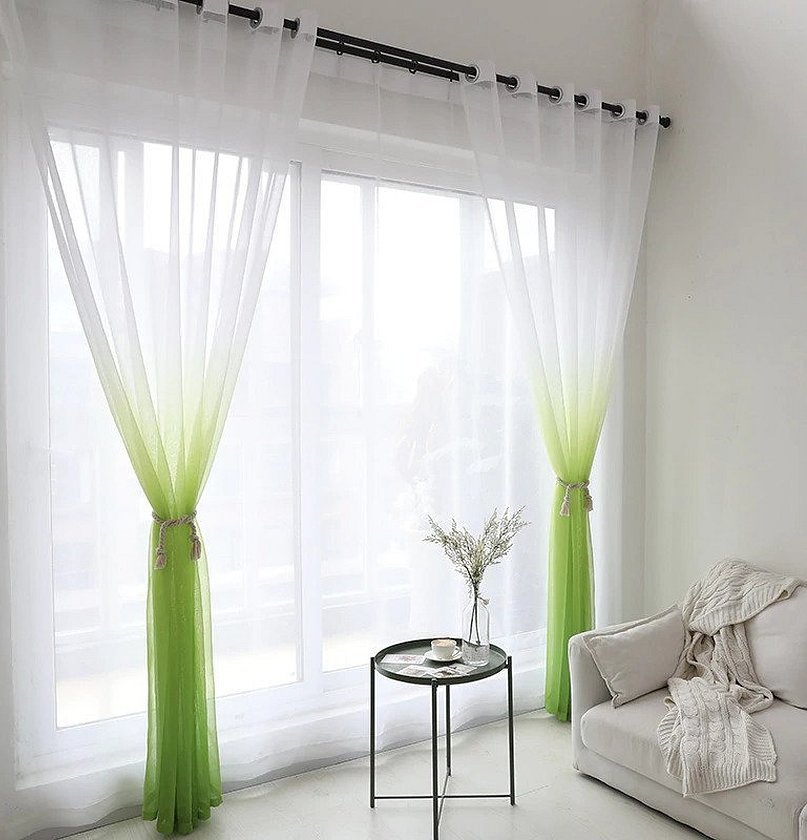
Also, when buying a tulle tape, you need to remember the number of ropes that pierce it, the number of finished folds depends on them. Below are the basic rules for working with tulle.
To make tulle look good in a room, you need to pay attention not only to its appearance and color, but also to the overall design, to how it looks by the window.
Is the drapery done correctly, what is the length of the curtain and its texture? This is exactly what curtain tape is needed for, to hide the flaws of the tulle.
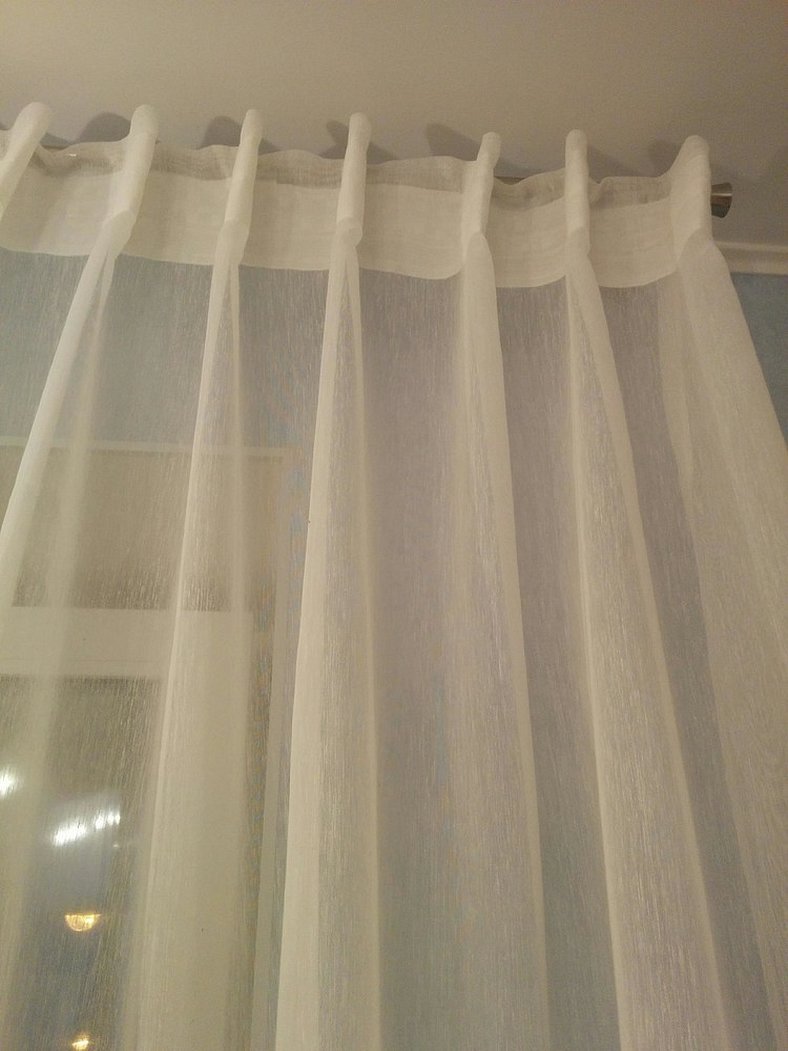
Step-by-step work on sewing on curtain tape:
- The curtain fabric needs to be measured and cut.
- The length of the curtain tape is measured. To do this, you need to add about 25-30 centimeters to the length of the tulle. This increase is necessary for additional folds and taking into account the shrinkage of the fabric after the first wash.
- It is necessary to process the side cuts of the fabric. Fold the tulle to the inside. If the material is crumbling, you can fold it several times.
- Fasten the tape and curtain together, this will make sewing easier later.
- Place the tape two centimeters below the edge of the tulle and fold it on both sides.
- Carefully sew the tape to the fabric. After that, remove the basting stitches and needles.
- At the end, sew the tape on the sides.
Important! When working with this fabric, you should try not to prick it too much, as the needles leave large holes in it. It is better to use the smallest needle size and thin threads for work.
Tips from an experienced seamstress
After the curtain tape has been trimmed, seamstresses recommend folding the inside of the curtain by a few centimeters. If you need to sew the tape to organza, you should remember that its width is generally greater than the height of the ceiling. It is better not to cut off the excess fabric, but simply bend it.
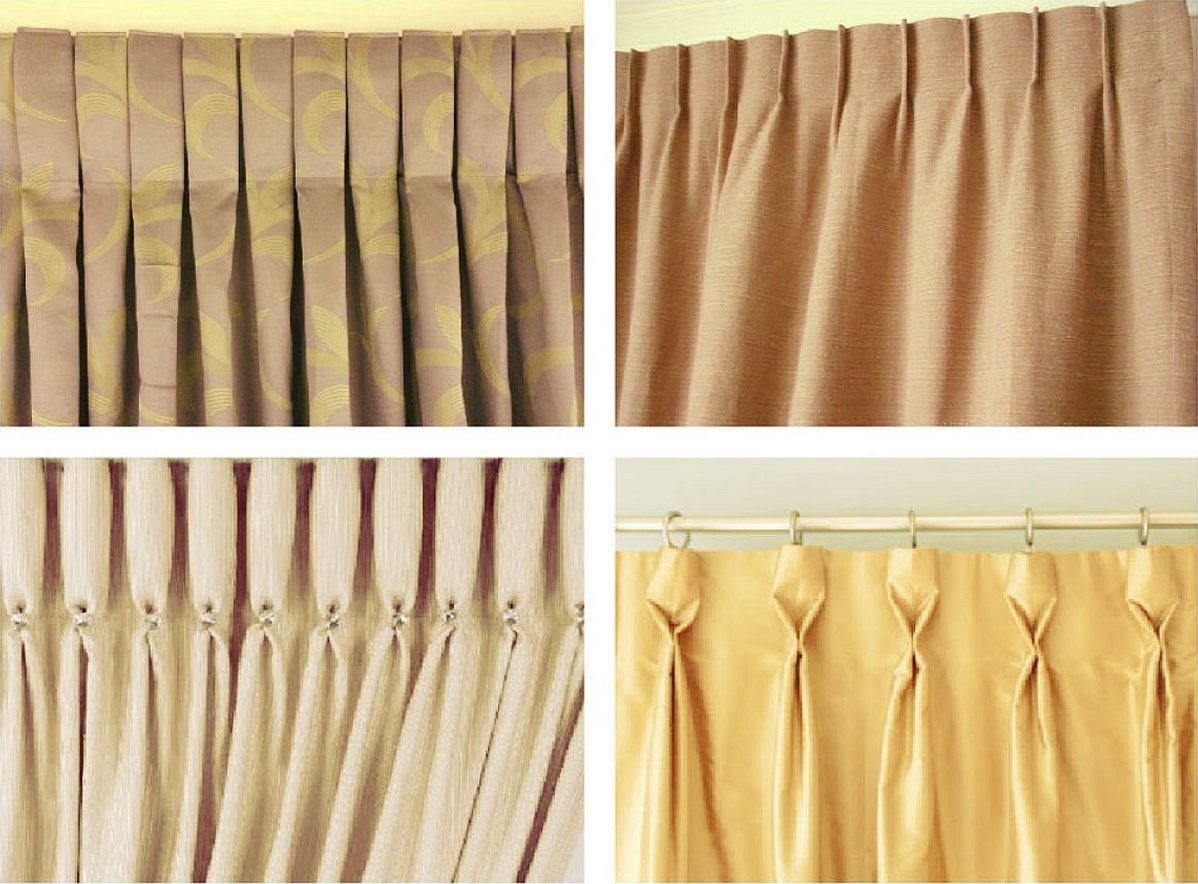
It is advisable to iron this fold well. But you need to do it through gauze. Then you can sew the ribbon to the organza.
Fold the tape inward by 2 centimeters and fix it with a needle. After that, the top line is done. To do this, you need to make an indentation from the edge of the curtain belt by 2 centimeters. It is advisable to remember that the tape should not protrude from the top edge of the canvas.
After stitching the top line, do not cut off the remaining piece of tape. It must be laid out on the surface and fixed together with the material using pins used by seamstresses.
Attention! The step between the pins should be about 25 centimeters. This is necessary to perform a new line. If you do not seat the material in advance, then it will be quite difficult to perform such a line.
Thin curtains are very often used for tents or entrance doors, they have a zipper sewn into them, they protect the room from mosquitoes.
If the curtain is very frayed, the hem can be finished with piping or satin ribbon. The folds themselves can be decorated with metal buttons or sequins, they look good on thick materials.

Large curtains can be folded like a theater curtain during a performance. But this requires more than four cords.
For beginners in the art of tailoring, it is recommended to visit sewing sites. There you can find master classes on how to sew curtains on tape yourself or how to choose the right material for them. There you can ask experienced craftswomen for advice, and also share your successes.
It is advisable to wash curtains by hand. If you need to wash them in a machine, use a special mesh bag. In this case, it is better to set the delicate mode, and the powders should only be liquid. Iron organza, tulle, veil and other light materials only through gauze. Otherwise, yellow stains may remain on the products. Also, during ironing, it is necessary to spray the curtain with water from time to time.
It is forbidden to dry such fabrics near heating devices or under direct sunlight. It can become brittle and dry.
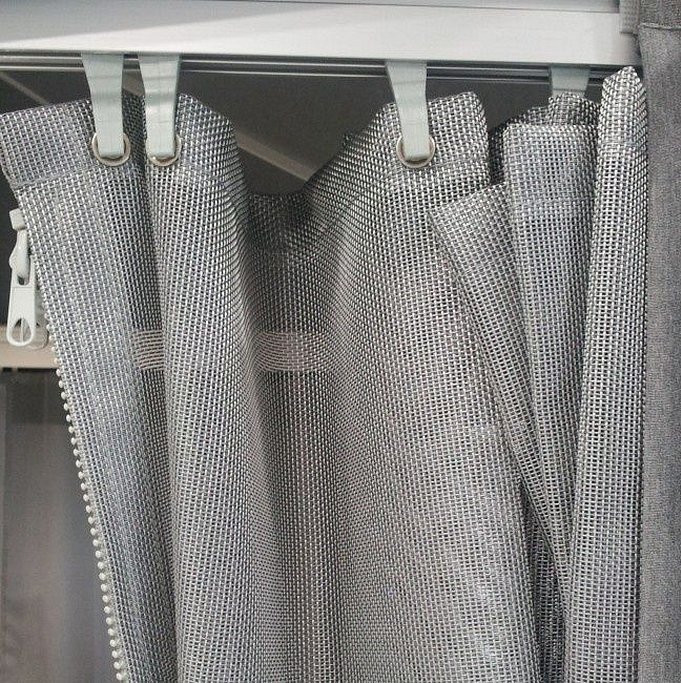
Curtain tape will help to easily give the curtains an original and beautiful look. Its advantage is that sewing it will not be difficult even for a needlewoman without experience. It helps to make the window design in the form of numerous folds.




